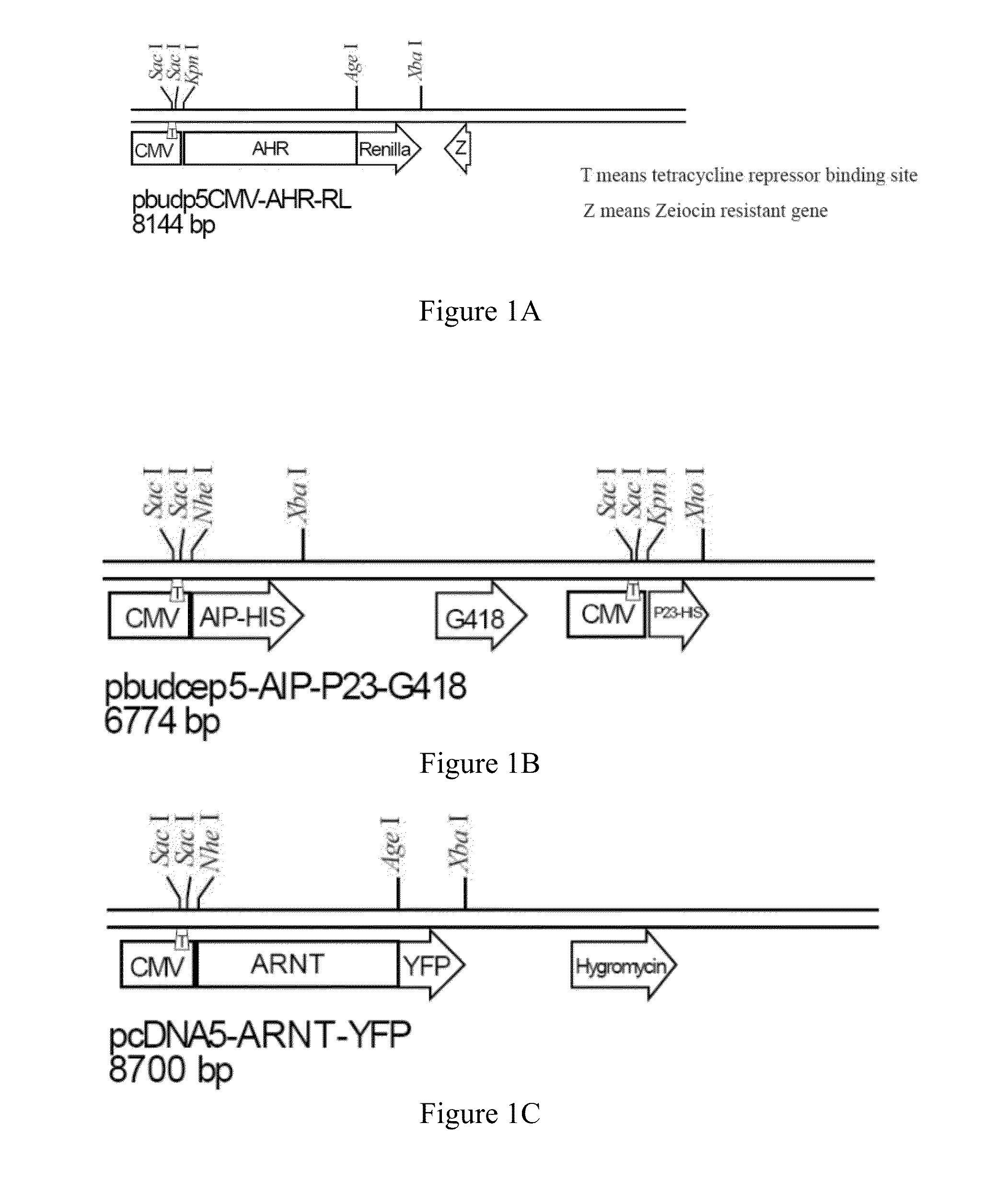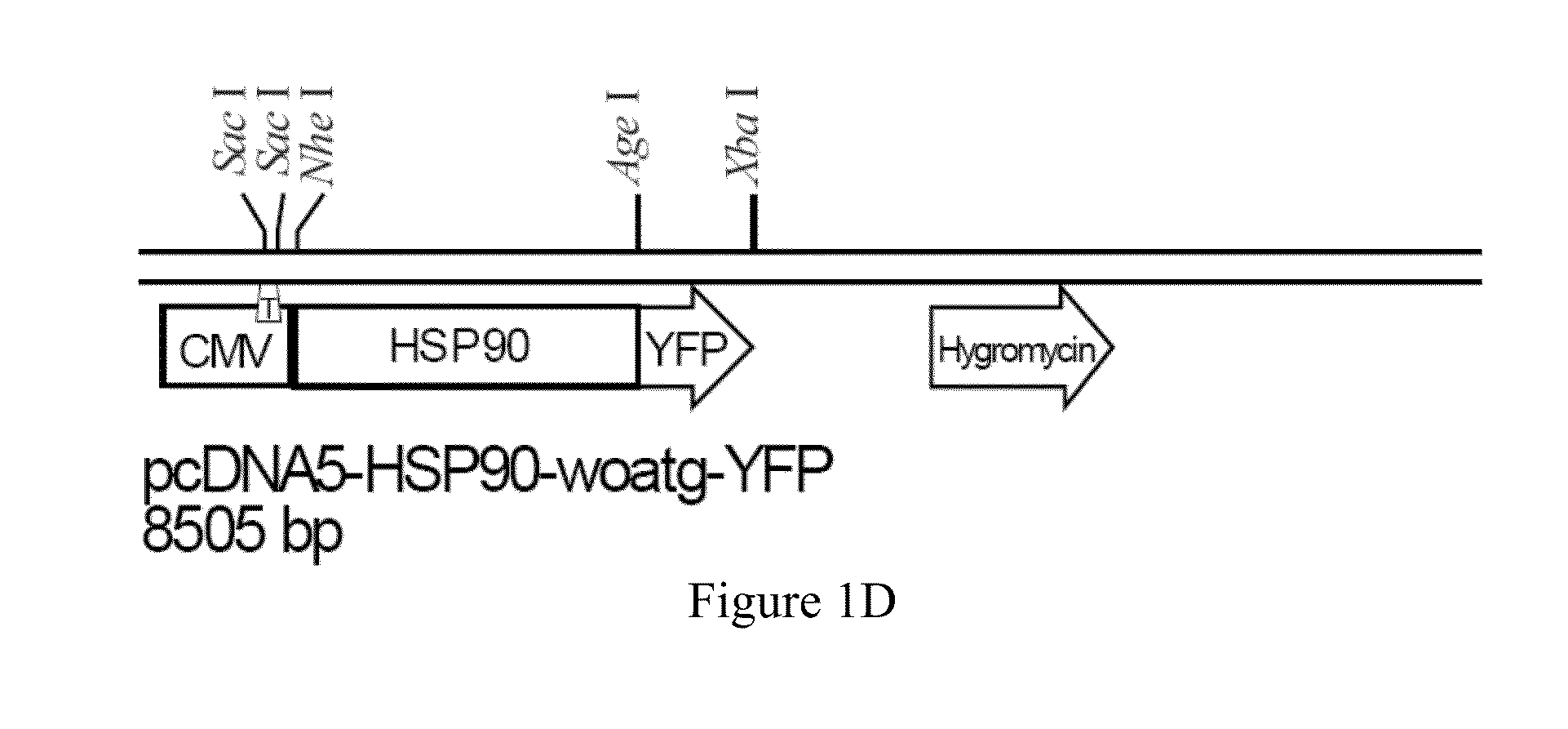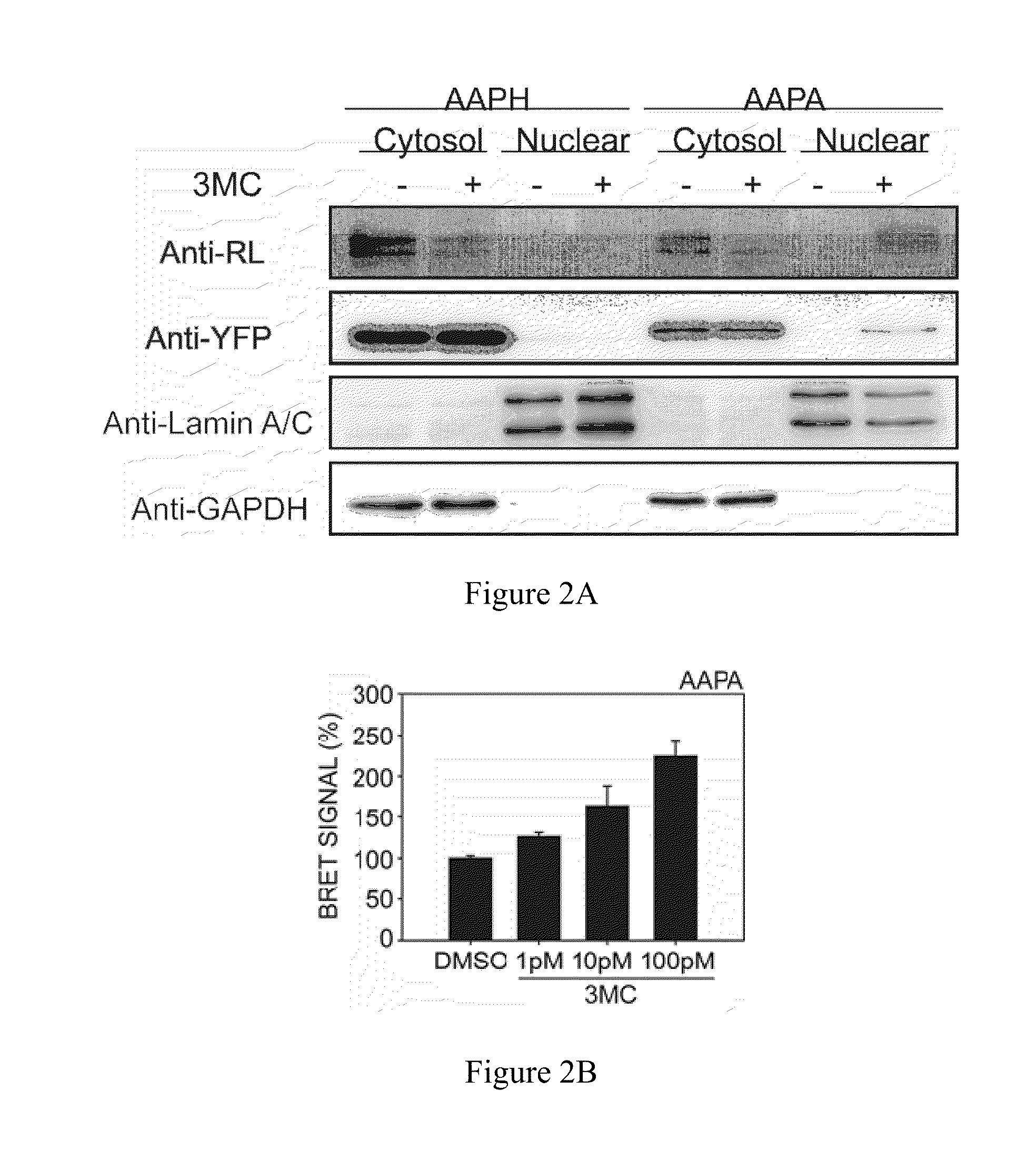Method and system of detecting dioxin-like compounds
- Summary
- Abstract
- Description
- Claims
- Application Information
AI Technical Summary
Benefits of technology
Problems solved by technology
Method used
Image
Examples
example 1
onstruction
[0043]AHR (in the construction shown in FIG. 1A), AIP and P23 (in the construction shown in FIG. 1B), ARNT (in the construction shown in FIG. 1C) and HSP90 (in the construction shown in FIG. 1D) were amplified from HEK293 cDNA and all point mutations were corrected. Renilla Luciferase (RL) was derived from pRL-TK (Promega Corporation, Madison, Wis., USA) and YFP was from pEYFP-N1 (Clontech Laboratories, Inc., Mountain View, Calif. USA).
example 2
n of Stably Transfected Cell Lines
[0044]Tetracycline-regulated expression cells (T-REx™ cells) (Invitrogen, Carlsbad, Calif., USA) were transfected with AHR-RL, AIP-HIS and P23-HIS by lipofectamin 2000™ transfection reagent (Invitrogen, Carlsbad, Calif., USA) according to the manufacturer's instructions. Transfected cells were cultured in DMEM growth medium (Gibco, USA) supplemented with 10% fetal bovine serum (FBS), (Gibco, USA), 5 μg / ml Blasticidin, 250 μg / ml Zeocin and 500 μg / ml G418. The optimal cell lines were then transfected with ARNT-YFP or HSP90-YFP and selected with 200 μg / ml Hygromycin to obtain a stable cell line transfected with ARNT-YFP (called as “AAPA cells”) and obtain a stable cell line transfected with HSP90-YFP (called as “AAPH cells”).
example 3
tection by BRET Assay in the AAPA and AAPH Cells
[0045]The AAPH and AAPA cells as obtained in Example 2 were treated with 1 μg / ml tetracycline for 24 hours and then added 10 μM 3MC for 3 hours. The expression of inducible AHR-RL, AIP-HIS (a His-tagged AIP), P23-HIS (a His-tagged P23), HSP90-YFP, or ARNT-YFP was checked by western blot. The cytosol and nuclear fractions were detected with the indicated antibodies, including anti-RL, anti-YFP, anti-Lamin A / C, and Anti-GAPDH. The results of the western blots were shown in FIG. 2A, which confirmed the AHR and ARNT protein localizations upon 3MC treatments to the AAPH and AAPA cell lines.
[0046]For the inducible protein expression and AHR complex formation, the AAPA cells, which were stably co-transfected with AHR-RL, AIP-HIS, P23-HIS and ARNT-YFP, were prepared following the method as described in Example 2 and then were treated with 1 μg / ml tetracycline for 48 hours. Then, the treated cells were washed by phosphate-buffered saline (PBS) ...
PUM
 Login to view more
Login to view more Abstract
Description
Claims
Application Information
 Login to view more
Login to view more - R&D Engineer
- R&D Manager
- IP Professional
- Industry Leading Data Capabilities
- Powerful AI technology
- Patent DNA Extraction
Browse by: Latest US Patents, China's latest patents, Technical Efficacy Thesaurus, Application Domain, Technology Topic.
© 2024 PatSnap. All rights reserved.Legal|Privacy policy|Modern Slavery Act Transparency Statement|Sitemap



